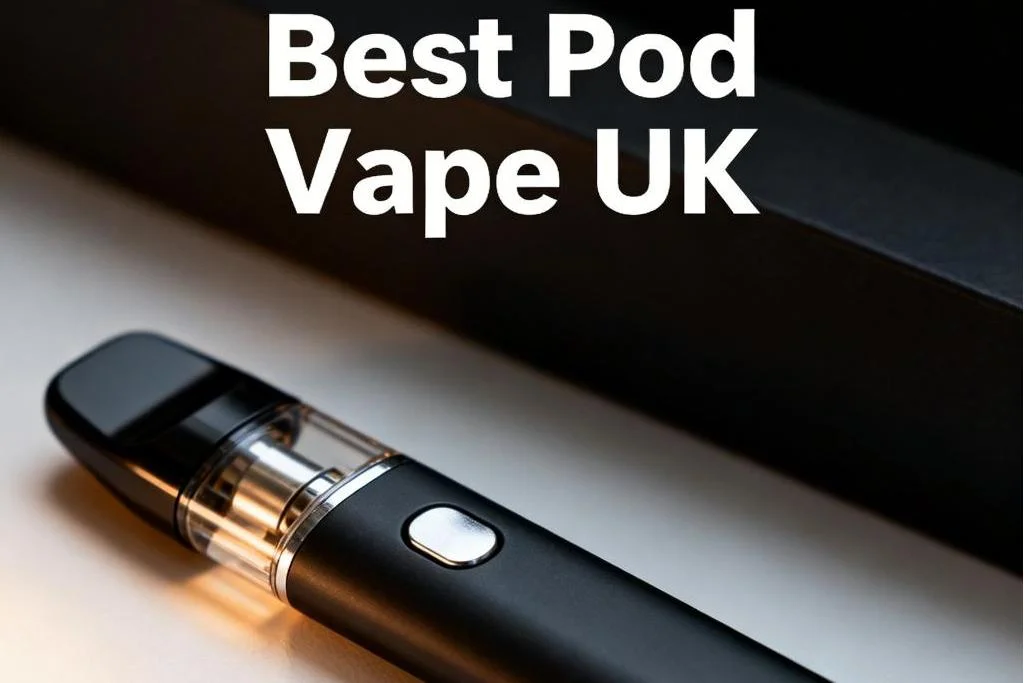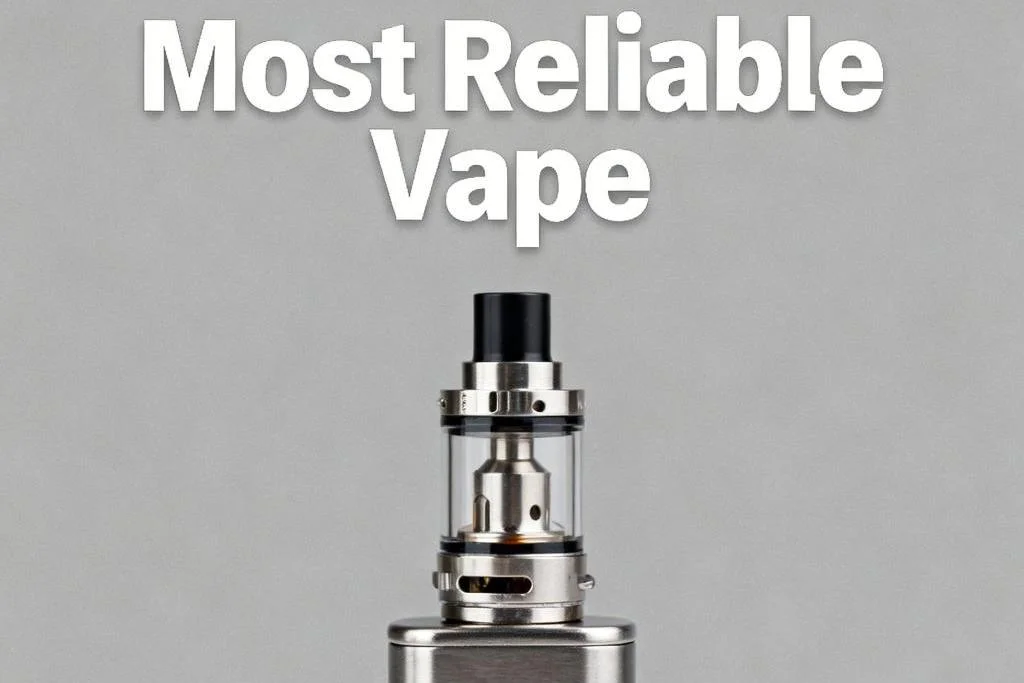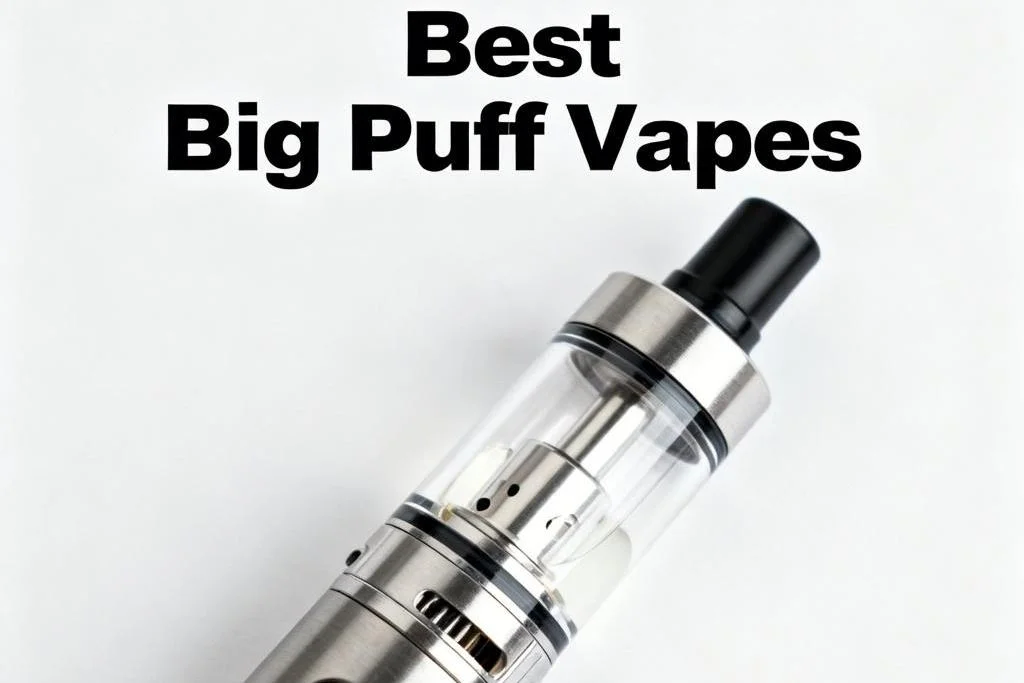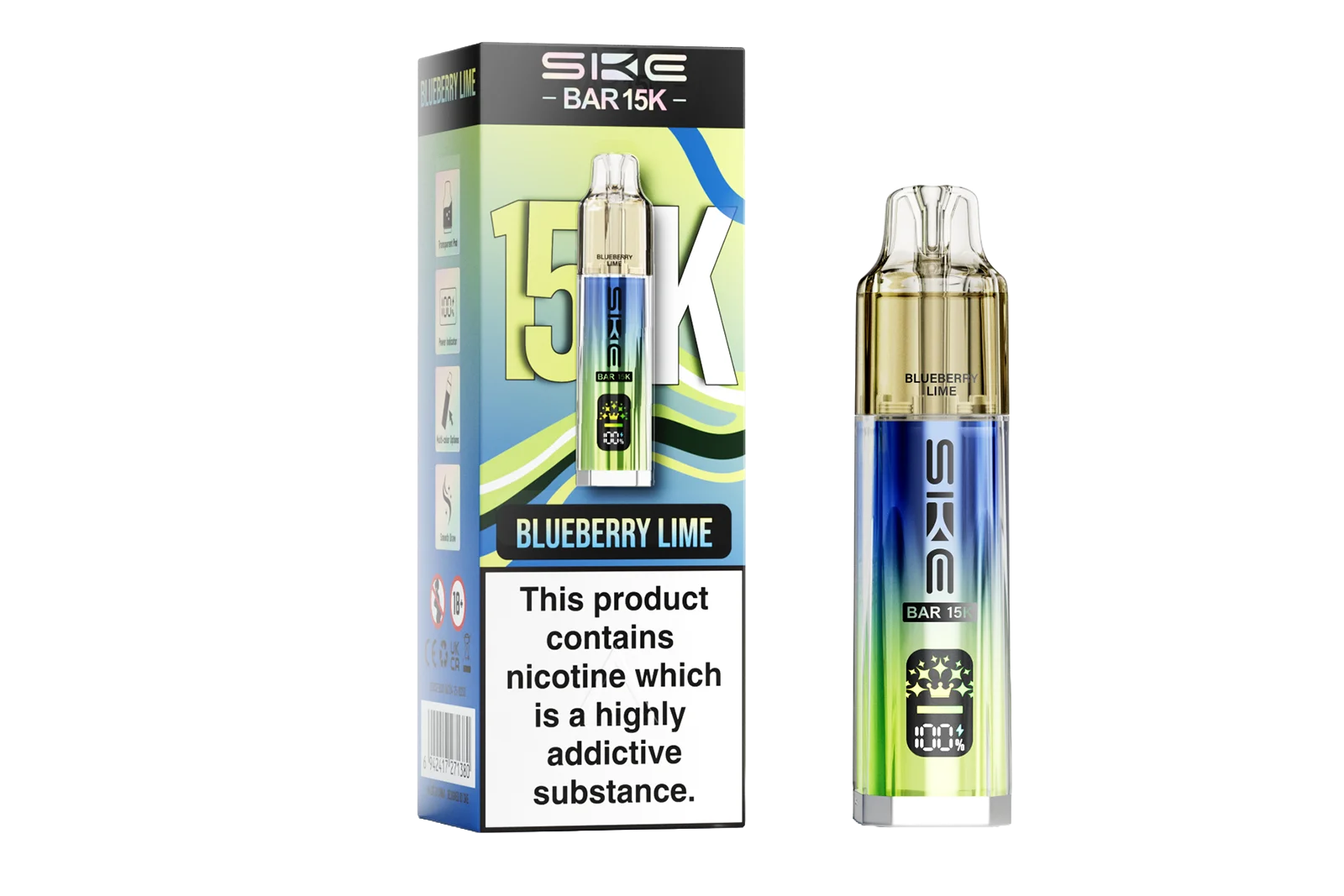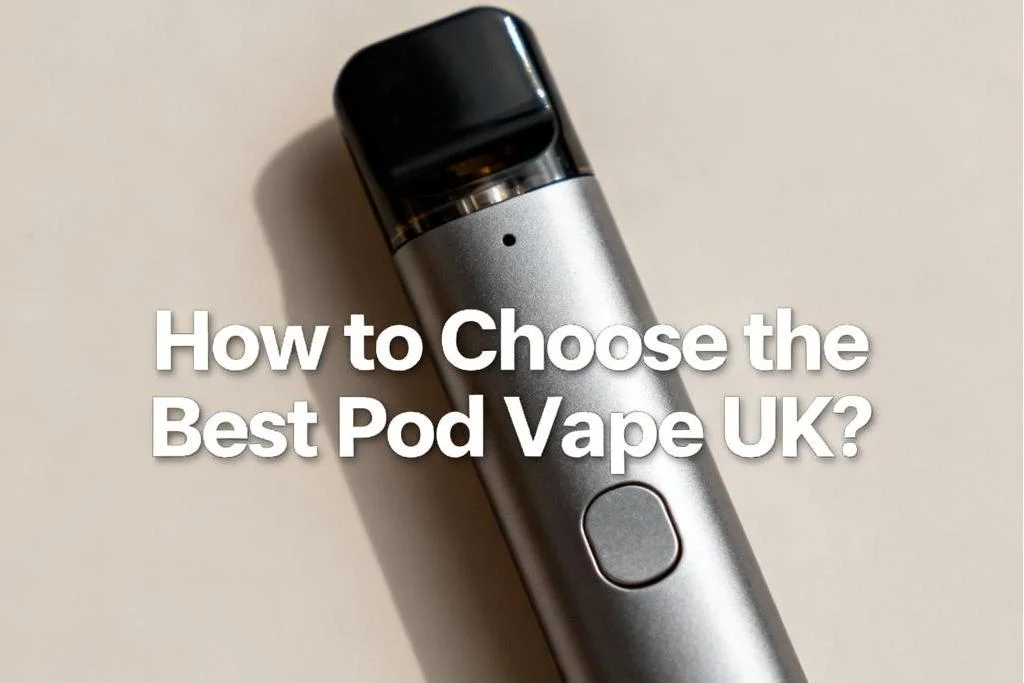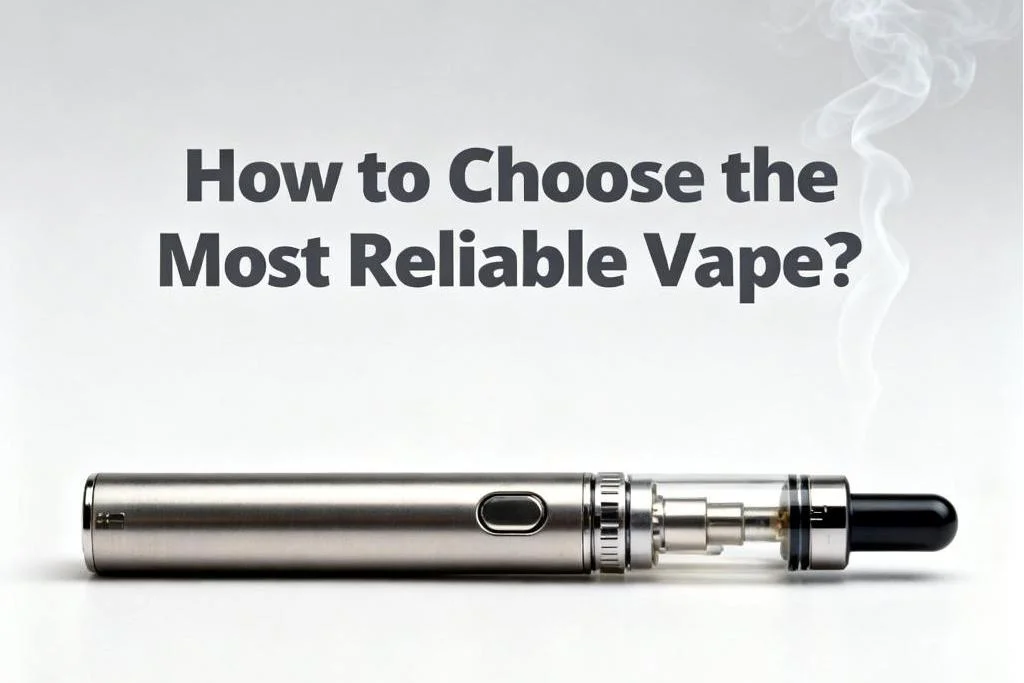What Is a Distillate Vape? Pure Potency Unveiled!
In the ever-evolving e-cig world, enthusiasts, and novices are often introduced to various vaping terms and products. There's such an intriguing term attracting significant attention "distillate vape." But what is a distillate vape exactly?

What Is a Distillate Vape?
A distillate vape is a sophisticated and highly refined vaping device that leverages the unparalleled purity and potency of distillates — exquisitely concentrated extracts derived from cannabis or nicotine through an intricate and meticulous distillation process.
The advanced process entails subjecting the raw material to precise heat, causing the desired compound, such as THC, CBD, or nicotine, to evaporate while leaving behind unwanted impurities and residual compounds. Then, this vapor is meticulously collected and condensed back into a pure, liquid form, resulting in an exceptionally potent and pristine product.
Distillate vapes are prized for their high concentration of active ingredients, delivering strong effects with minimal impurities, which is favored by users who seek maximum potency and a smooth, flavorful inhale without the complexities of other compounds.
What Does Distillate Mean in Vapes?
"distillate" in vape refers to a highly purified extract derived from cannabis or nicotine. For cannabis, the distillation process means isolating THC or CBD from other cannabinoids, terpenes, and plant material, generating a clear, viscous liquid that provides a strong, consistent effect. As for vaping, distillates are used to create cartridges and e-liquids that offer a powerful and pure experience, free from the residual flavors and compounds found in less refined extracts.
What Is a Distillate Cartridge?
A distillate cartridge is a vape cartridge filled with distilled cannabis or nicotine extract, aiming to fit standard vape pens and batteries, providing an easy and convenient way to enjoy the benefits of the thick, clear, and amber-hued distillates. They're popular for their high concentration of active ingredients, offering users a potent hit with a smooth and clean flavor profile.
How to Tell if a Vape Is Distillate?
Identifying a distillate vape involves checking its labeling and visual characteristics.
Reputable brands will indicate clearly whether the vape contains distillate, often highlighting terms like "distillate" or "THC distillate" on the packaging. Visually, distillate oil is typically clear and amber-gold in color, a sign of its high purity.
The flavor is usually neutral or slightly sweet when using a vape, lacking the robust terpene profiles of full-spectrum extracts. A distillate vape provides an immediate, pronounced experience with minimal aftertaste due to the high concentration of the active ingredient, distinguishing it from other types of vapes.

Advantages of Distillate Vape
A. Unmatched Potency
Distillates are highly concentrated extracts that boast significantly higher levels of the active ingredient, whether it's THC, CBD, or nicotine, compared to other extract forms. This high concentration means users can achieve their desired effects with far fewer puffs, and its potency ensures a powerful and consistent experience, appealing to both seasoned users and those seeking a more intense vaping session.
B. Purity and Consistency
The meticulous distillation process strips away all impurities and unwanted compounds, leaving behind an exceptionally pure concentration, translating to a cleaner, smoother vaping experience, free from the harshness and aftertaste that can accompany less refined extracts.
Moreover, the consistency of distillates means that each hit delivers the same high-quality experience, providing users with a reliable enjoyment they can count on every time.
C. Versatility in Use
Distillate vapes may accommodate a variety of preferences and usage scenarios, since they can be easily used with different types of vape pens and cartridges, making them a convenient choice for users who appreciate flexibility in their vaping devices.
Additionally, distillates can be infused with terpenes or flavorings to enhance the vaping experience, supplying a wide range of flavor profiles to suit individual tastes.
D. Discreet and Convenient
Due to their high potency, users need fewer puffs to achieve the desired effect, which means they can vape less frequently and more discreetly. The compact and portable design of vape pens and cartridges further enhances their convenience, allowing users to carry and use them with ease, whether at home or on the go.

Regular Vape vs. Distillate Vape
A. Composition and Purity of E-liquid
Regular vapes typically use e-liquids that contain a mixture of propylene glycol (PG), vegetable glycerin (VG), flavorings, and either nicotine or cannabis extracts that can vary in purity and may include other cannabinoids, terpenes, and plant materials, resulting in a less refined concentration.
In contrast, a distillate vape uses a highly purified and concentrated form of cannabis or nicotine distillate. Its meticulous process yields a concentration that's almost exclusively the desired active ingredient, whether it be THC, CBD, or nicotine, resulting in a cleaner, more potent vaping experience, free from the residual flavors and harshness often found in regular vape e-liquids.
B. Potency and Effectiveness
The potency of a regular vape far falls behind that of a distillate vape. Because distillates are highly concentrated, they deliver a much higher level of the active ingredient per puff than regular e-liquids, meaning users can achieve their desired effects with fewer puffs, making distillate vapes more efficient and effective.
C. Flavor and Aroma
Regular vape e-liquids often come in varied flavors, created by adding artificial or natural flavorings to the base liquid, ranging from fruity and sweet to savory and rich, providing users with a broad spectrum of taste experiences.
Distillate vapes, however, offer a different flavor profile. The distillation process strips away many of the natural terpenes that contribute to the flavor and aroma of the original plant material, resulting in a more neutral taste. Of course, terpenes can be reintroduced to distillates to create customized flavor profiles, enhancing the vaping experience with natural, aromatic compounds.
D. User Experience and Convenience
The user experience of a regular vape tends to be less superior in terms of smoothness and satisfaction compared to distillate vapes. The high purity of distillates signifies the vapor produced is often smoother and less irritating to the throat and lungs than regular vape e-liquids, which may contain more impurities and additives.

Live Resin vs. Distillate Vape
A. Comparing Potency: Concentration Levels
Distillate vapes typically have the upper hand since the distillation process isolates the active ingredients, such as THC or CBD, to create a highly concentrated product, suggesting that distillate vapes often contain higher levels of these compounds compared to live resin.
On the other hand, while live resin may have a slightly lower concentration of active ingredients, it offers a more balanced and holistic experience due to the presence of a wider range of cannabinoids and terpenes.
B. Flavor and Aroma: Terpene Preservation
One of the standouts of live resin is its superior flavor and aroma profile. The flash-freezing extraction method preserves the terpenes, which are responsible for the distinctive flavors and scents of the cannabis plant, resulting in a vaping experience that is rich, complex, and true to the original plant's characteristics.
Distillate vapes, although potent and pure, often have a more neutral flavor due to the terpenes' removal during distillation. However, some manufacturers reintroduce terpenes to distillates to enhance the flavor, achieving an equilibrium between purity and taste.
C. User Experience: Effects and Enjoyment
Live resin is cherished for providing a more holistic and full-bodied effect, often described as the "entourage effect," where the combined presence of various cannabinoids and terpenes work synergistically to enhance the overall experience, leading to a more nuanced and enjoyable high.
Distillate vapes, with their high potency and purity, deliver a strong and immediate effect that is highly effective for users seeking quick and powerful relief or a potent recreational experience.
D: Versatility and Use: Product Applications
Live resin is often preferred by users who enjoy the full spectrum of the cannabis plant, including the robust flavors and aromas. It's typically used in dab rigs, vape pens designed for concentrates, and even in edibles for those who want to experience the full range of effects.
Distillate, with its high purity and potency, is commonly used in assorted vape pens and cartridges, making it highly accessible and easy to use. Its neutral flavor allows it to be infused with a wide range of flavorings, offering more options for customization.

How to Use a Distillate Vape?
1. Choose the Right Device: The First Step to Success
You'll need a vape pen or vaporizer specifically designed for vaping distillate. It typically has a cartridge or a tank that holds the distillate.
510-threaded Vape Pens: These are the most common and compatible with most distillate cartridges available on the market. If you've bought a pre-filled distillate cartridge, it's probably what you need.
Pod Systems: Some pod systems also support distillate, although the pods may be proprietary and designed for specific brands or devices.
Please make sure your vaporizer is for concentrates, as using the wrong one could lead to poor performance or even damage to the device.
2. Load the Distillate (If Not Pre-filled)
If you're using a distillate syringe or a jar of concentrate rather than a pre-filled cartridge, the next step is to load the distillate into your vape pen.
Syringe Method: Gently pull the syringe's plunger to extract the desired amount of distillate. Then, slowly squeeze the distillate into the tank or cartridge of your vape pen. Be careful not to overfill.
Jar Method: If you're working with a jar of distillate, you can use a dab tool or syringe to scoop the concentrate and load it into the vape chamber. The process is essentially the same, but please avoid spilling the sticky distillate.
The goal is to load the distillate properly so that the coil or atomizer inside the vape pen has enough liquid to vaporize when heated.
3. Heat Your Device: Getting the Perfect Hit
Now that your device is loaded, it's time to fire it up. Depending on the device, you may need to press a button to activate it, or it might be automatic (draw-activated).
Temperature Settings: Some vaporizers allow you to adjust the temperature. A temperature between 350-400°F (175-200°C) is optimal to ensure the distillate vaporizes smoothly without burning or producing harsh smoke. Excessive heat could result in a burnt taste, making it crucial to find the sweet spot.
Preheat: Some devices feature a preheat function that warms the distillate for a smoother, more consistent vaping experience.
Once your device is heated, you're ready to take your first hit.
4. Take a Slow, Steady Draw: No Need to Rush
Unlike nicotine vapes, where you might be used to quick puffs, distillates work best when you inhale slowly and steadily. It allows the vapor to fill your lungs without overwhelming you.
A short, slow inhale will give you that smooth hit without coughing fits. If you're new to distillates or concentrate vaping in general, start with a small draw and gauge your tolerance before taking a bigger puff.
5. Maintain Your Vape: Keep It in Top Shape
Regular maintenance is essential to keep your distillate vape pen performing at its best and lasting longer.
Keep It Clean: Residue can build up inside the tank or cartridge over time. Use a cotton swab dipped in isopropyl alcohol to clean the mouthpiece, atomizer, and any other parts that come into contact with the distillate.
Store Properly: Distillate cartridges should be stored upright in a cool, dry place. Heat can cause the distillate to become runny or degrade the flavor, while cold temperatures may cause it to thicken or even crystallize.
Regular cleaning and proper storage ensure that your vape pen remains efficient, and the distillate stays fresh, maximizing flavor and potency.
6. Enjoy Responsibly: A Little Goes a Long Way
Distillate is potent, and because of its high concentration, it doesn't take much to feel the effects. Start with a small puff and wait a few minutes to see how it affects you. Distillates can hit hard, so be cautious if you're new to concentrates or have a lower tolerance.
In conclusion, understanding what is a distillate vape reveals a highly refined, potent, and pure vaping option that stands out in the crowded vape market. Distillate vapes offer unmatched potency, a clean and smooth user experience, and versatile applications, making them a popular choice among vaping enthusiasts.
FAQs:
Q1: Can You Vape Distillate?
Yes, you can definitely vape distillate! Vaping is one of the most popular methods for consuming distillate concentrates. Distillates are highly refined and potent, which makes them ideal for vaping. When you vape distillate, you're inhaling vaporized THC or CBD, which offers fast onset effects without the harshness that may come with smoking.
To vape distillate, you'll need a vape pen or vaporizer specifically designed for concentrates, and a distillate cartridge or a syringe of concentrate. Verify your device is set to the right temperature for the best results and smoother hits.
Q2: What Temperature to Vape Distillate?
The ideal temperature range for vaping distillate is typically between 350°F and 400°F (175°C to 200°C). It ensures the distillate vaporizes effectively without burning or producing an unpleasant taste.
If the temperature is too high, you risk burning the distillate, which can generate a harsh, burnt flavor and reduce the quality of your experience. If the temperature is too low, you might not vaporize the distillate efficiently, resulting in a weaker hit.
Many vaporizers have adjustable temperature controls, so start around 375°F and adjust as needed to find the sweet spot for your vape device and personal preference.
Q3: Does Distillate Vape Smell?
Yes, distillate vapes do have a smell, but it's typically much less pungent than smoking traditional cannabis flowers. Distillates are usually refined to remove most of the plant's terpenes (which contribute to the distinctive smell), so the odor tends to be subtle and less noticeable. Depending on the flavor profile of the distillate (e.g., fruity, earthy, or sweet), you might notice a mild scent when you exhale.
TABLE OF CONTENTS
- What Is a Distillate Vape?
- What Does Distillate Mean in Vapes?
- What Is a Distillate Cartridge?
- How to Tell if a Vape Is Distillate?
- Advantages of Distillate Vape
- A. Unmatched Potency
- B. Purity and Consistency
- C. Versatility in Use
- D. Discreet and Convenient
- Regular Vape vs. Distillate Vape
- A. Composition and Purity of E-liquid
- B. Potency and Effectiveness
- C. Flavor and Aroma
- D. User Experience and Convenience
- Live Resin vs. Distillate Vape
- A. Comparing Potency: Concentration Levels
- B. Flavor and Aroma: Terpene Preservation
- C. User Experience: Effects and Enjoyment
- D: Versatility and Use: Product Applications
- How to Use a Distillate Vape?
- 1. Choose the Right Device: The First Step to Success
- 2. Load the Distillate (If Not Pre-filled)
- 3. Heat Your Device: Getting the Perfect Hit
- 4. Take a Slow, Steady Draw: No Need to Rush
- 5. Maintain Your Vape: Keep It in Top Shape
- 6. Enjoy Responsibly: A Little Goes a Long Way
- FAQs:
- Q1: Can You Vape Distillate?
- Q2: What Temperature to Vape Distillate?
- Q3: Does Distillate Vape Smell?

